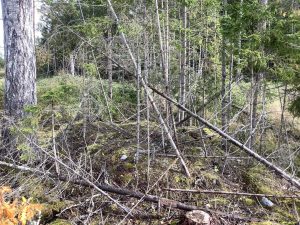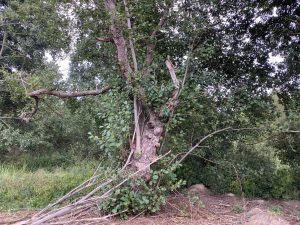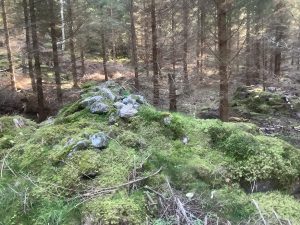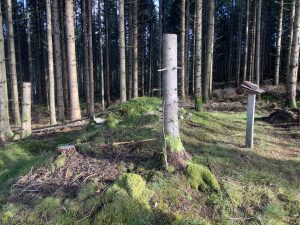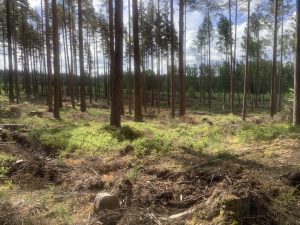Sometimes, especially in public media, you get the impression that we are in fact running out of forests. In some parts of the World that is true. But the volume of forest is growing in countries like Sweden, where reforestation has been mandatory by law since 1903. But is that the whole truth?
Running out of forest
For almost 100 years, the Swedish National Forest Inventory has kept track of the Swedish forest. Since 1923, they have described the state of the forest and the changes in it. The methods and results presented by the National Forest Inventory are being discussed, as we wrote about a while ago. Nevertheless, these are the official figures that are presented each year. So, let’s have a look at them.
Growing stock
Let’s keep it simple and just compare the figures. If we look at all tree species in all of Sweden, the volume in 1926 was approx. 1,6 billion cubic meters. In 2019, the corresponding figure was approx. 3,3 billion cubic meters.
Number of stems
The number of stems is also mentioned in the statistics from 1926 – 2019. In 1926, the total number of stems > 10 centimeters (4”) in diameter in Sweden was 9,8 billion. In 2019 it was approx. 13,3 billion stems.
The figures for growing stock and the number of stems could be found under this link under “Tables”.
Discussion
This is pure and simple mathematics that shows that we are not running out of forest. On the contrary, we have much more forest in Sweden today than 100 years ago. So, why are some claiming that the forest is disappearing?
My theory is that it’s about how you describe a forest. The description that the National Forest Inventory gives is from an industrial perspective. It’s all about whether the industry will have enough raw materials in the future or not. It’s logical as the forest industry is very important for the nation (Sweden) and was even more important 100 years ago. For us who have been around for a while, it’s natural.
For environmental lobbyists and (many of) the public, it’s different. The environmentalists want biodiversity, refuge areas for endangered species, and vast areas where no forestry actions are allowed. The public wants what they hear and read about in the media. Especially all kinds of actions that will allow them to buy things and fly across the World for vacation once a year with a good conscience, such as carbon storage. (Yes, that was a bit sarcastic but at least partly true)
So, what is a forest?
Describing a forest isn’t as easy as it seems. Old forestry people (like me) want production, cubic meters (or whatever), good quality timber, as fast as possible. Hunters want forests that can feed whatever they are hunting, including free-sight areas where they can get a good shot at the target. Then we have berry- and mushroom pickers, joggers, dog walkers, cross-country skiers, and many more. If you ask all of them, you will get different descriptions.
The more I think about it, the more impossible it seems to describe “a forest” in a way that suits everyone, or at least most people. I just must confess that I have no straight answer. Each one must describe their forest and try to find one that suits – and hope that no one cuts it down.
Different types of forest – examples
Here below are some photos that I took when working with following up felling operations. They are all forest, but slightly different. Which one is your favorite?
According to the National Forest Inventory’s description, it is not a forest in the photo above as the diameter is below 10 centimeters (4″). Still, it’s a n important type of environment for some species and should be spared when possible.
In this photo, you see mainly one tree that blocks the view of the rest of the forest. A nightmare for a harvester operator but a wet dream for an environmentalist, but still a forest. So, here we can say the two actually can agree to leave the tree. Most likely this tree and the wetland forest behind it hold quite a few unusual, if not even endangered species.
In the two photos here above it’s the other way around. Production forest – a nightmare for the environmentalist and a wet dream for the harvester operator and the forest industry. Here they probably don’t agree. The cairn reveals that this is agricultural land that has been converted to forest land.
A wet dream for a hunter? The question in this photo is if it is a forest. It was actually registered as a clearcut. All spruce trees were felled and the pine trees were left which created a mono-culture that the environmentalists will probably not call a forest.
These were only a few examples of forest types. Of course, there are many more and they are all forests. It’s only about what you wish to use them for. But the (official) fact still is that we have more cubic meters and stems than ever in the Swedish forests. If that’s good or bad is another discussion …
All photos: Per Jonsson






